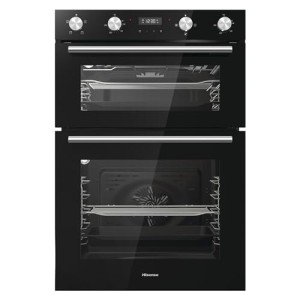The Comprehensive Guide to Built-In Ovens
Introduction
Built-in ovens are a staple in contemporary kitchen areas, integrating elegance with functionality. They offer a sleek aesthetic and efficient cooking capabilities, making them a favored option for homeowners and culinary enthusiasts alike. This short article looks into the advantages of built-in ovens, their different types, crucial functions to consider, installation ideas, and upkeep suggestions, in addition to often asked concerns.
Benefits of Built-In Ovens
Built-in ovens come with a range of advantages that add to their appeal. Here are some crucial advantages:
- Space-Saving Design: Built-in ovens are designed to fit seamlessly into cabinetry, permitting a more orderly and space-efficient kitchen design.
- Aesthetic Appeal: They supply a smooth and modern look that can enhance the general design of the kitchen.
- Improved Functionality: Built-in ovens often feature sophisticated functions and innovations that support various cooking techniques.
- Enhanced Cooking Experience: Many built-in designs include self-cleaning functions, temperature probes, and programmable settings, improving the cooking experience.
- Increased Property Value: A properly designed kitchen with built-in appliances can enhance the worth of a home.
Kinds Of Built-In Ovens
Built-in ovens can be found in several types, each created to meet various cooking choices and requirements. Here are the primary types:
| Type of Built-In Oven | Description |
|---|---|
| Single Oven | A single, standalone oven for standard baking and roasting. |
| Double Oven | Integrates 2 ovens in one unit, permitting multiple meals to cook at different temperatures. |
| Wall Oven | Installed in the wall, releasing up counter space, perfect for little cooking areas. |
| Convection Oven | Utilizes fans to circulate hot air for even cooking, improving the outcomes of baked products. |
| Steam Oven | Uses steam for healthier cooking options, protecting nutrients in food. |
Secret Features to Consider
When choosing a built-in oven, several functions can affect efficiency and use. Here are some essential features to remember:
Cooking Modes
- Bake: Traditional baking with bottom heat.
- Broil: Top heat cooking ideal for browning and crisping.
- Convection: Circulates hot air for even cooking.
- Steam: Uses steam for healthier cooking alternatives.
Size and Capacity
- Requirement sizes usually range from 24 to 30 inches wide.
- Consider the internal capability-- it can range from 3 to 6 cubic feet, permitting numerous meal sizes.
Controls and Smart Features
- Touchscreen Controls: Easy programming and modifications.
- Smart Technology: Connectivity functions permit for remote tracking and control through smart device applications.
Energy Efficiency
- Search for designs with ENERGY STAR scores, showing lower energy usage.
Security Features
- Features like car shut-off and child locks improve security throughout operation.
Installation Tips
Installing a built-in oven may need expert help, but here are some basic ideas to remember:
- Choose the Right Location: Ensure there's enough area in your cabinets for installation, remembering ventilation requirements.
- Electrical Requirements: Check that your kitchen's wiring fulfills the oven's power requirements, particularly for electric models.
- Level the Oven: Ensure the oven is level to promote even cooking.
- Protect the Oven: Attach it securely to the cabinets to avoid motion throughout usage.
Upkeep Advice
Regular maintenance is vital for the longevity and performance of a built-in oven. Here's how to keep it in top shape:
- Regular Cleaning: Wipe down surfaces after each usage and perform deep cleansing occasionally.
- Inspect Seals: Inspect door seals for wear and ensure they preserve an airtight fit to improve energy performance.
- Adjust Temperature: If food regularly comes out overcooked or undercooked, think about recalibrating the oven's temperature level settings.
- Expert Servicing: Schedule yearly check-ups with a trained professional to preserve optimal efficiency.
FAQs
What is the distinction between a built-in oven and a freestanding oven?
Built-in ovens are created to be installed within cabinets, offering a smooth look. On the other hand, freestanding ovens are standalone units that normally come with their own cooktop.
Are built-in ovens more pricey than freestanding models?
Normally, built-in ovens can be more costly due to the included setup expenses and advanced features. Nevertheless, rates vary commonly based upon brand name, size, and performances.
Can I install a built-in oven myself?
While it is possible to install a built-in oven yourself, it is advised to hire an expert to make sure proper installation, specifically if modifications to cabinetry or electrical work are required.
How typically should I clean my built-in oven?
It is a good idea to clean your built-in oven regularly after heavy usage. For deeper cleansings, utilize the self-cleaning function if available or regularly carry out manual cleaning to prevent build-up.
Built-in ovens are a valuable addition to any kitchen, providing both visual appeal and advanced cooking capabilities. By comprehending their types, features, installation, and maintenance requirements, homeowners can make educated choices that enhance their cooking experience and boost the overall worth of their homes. As www.ovensandhobs.uk continue to develop, built-in ovens will likely stay a prominent choice for contemporary homes.

